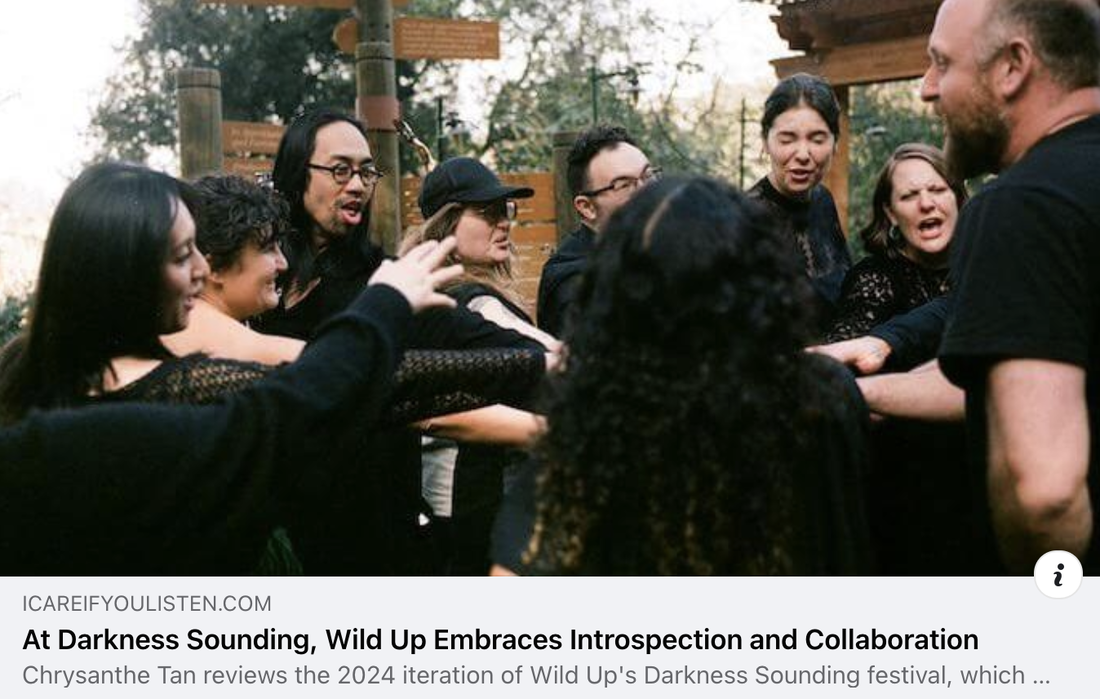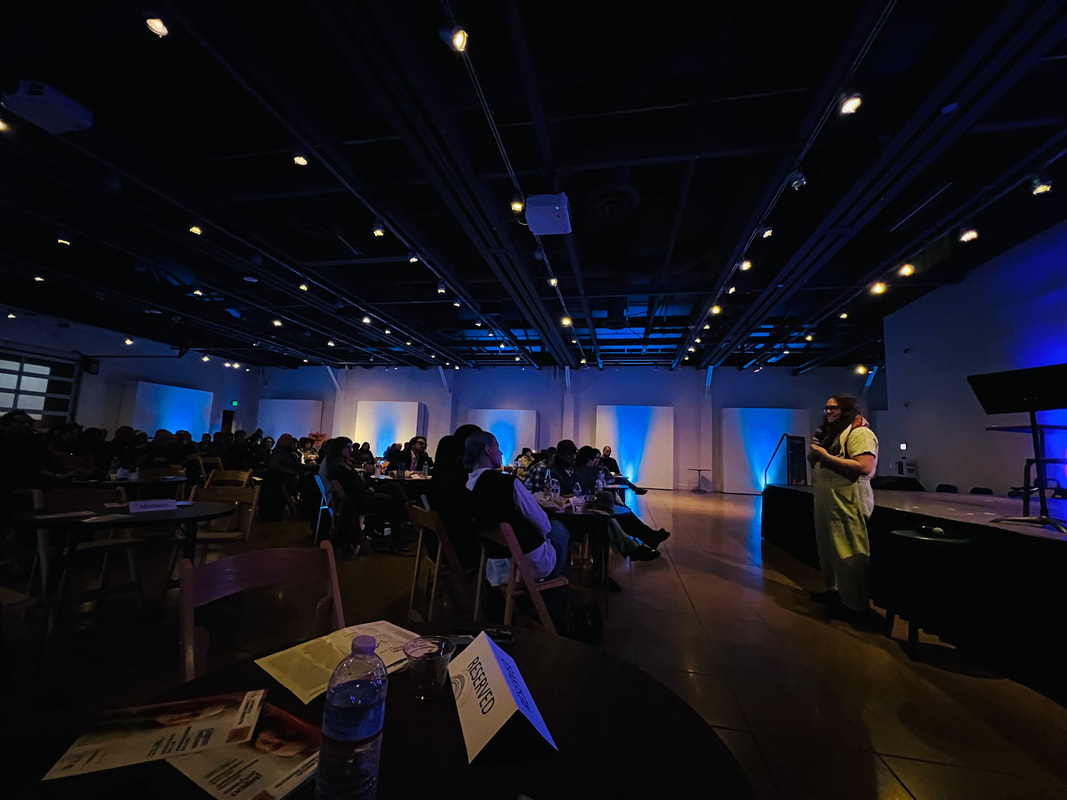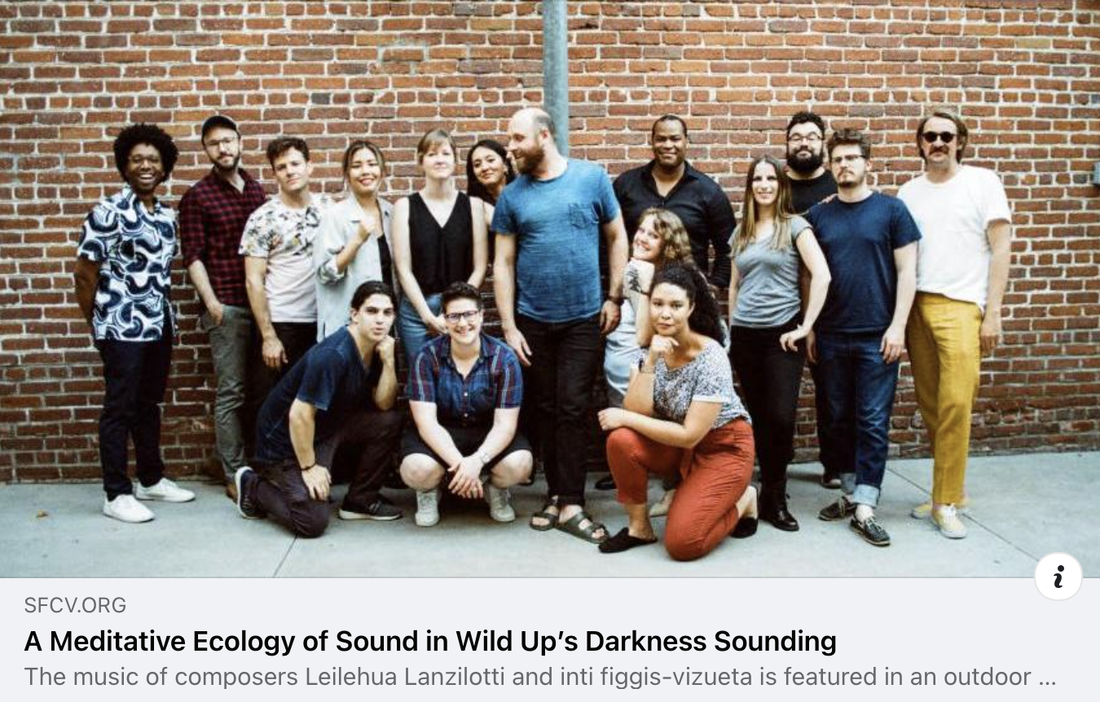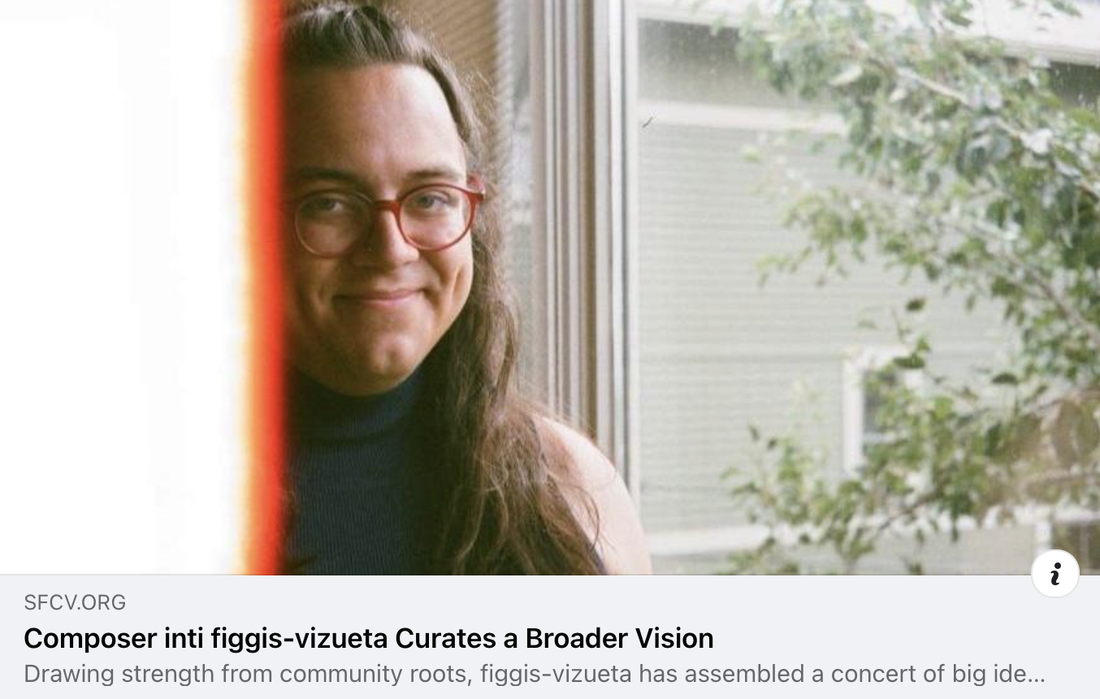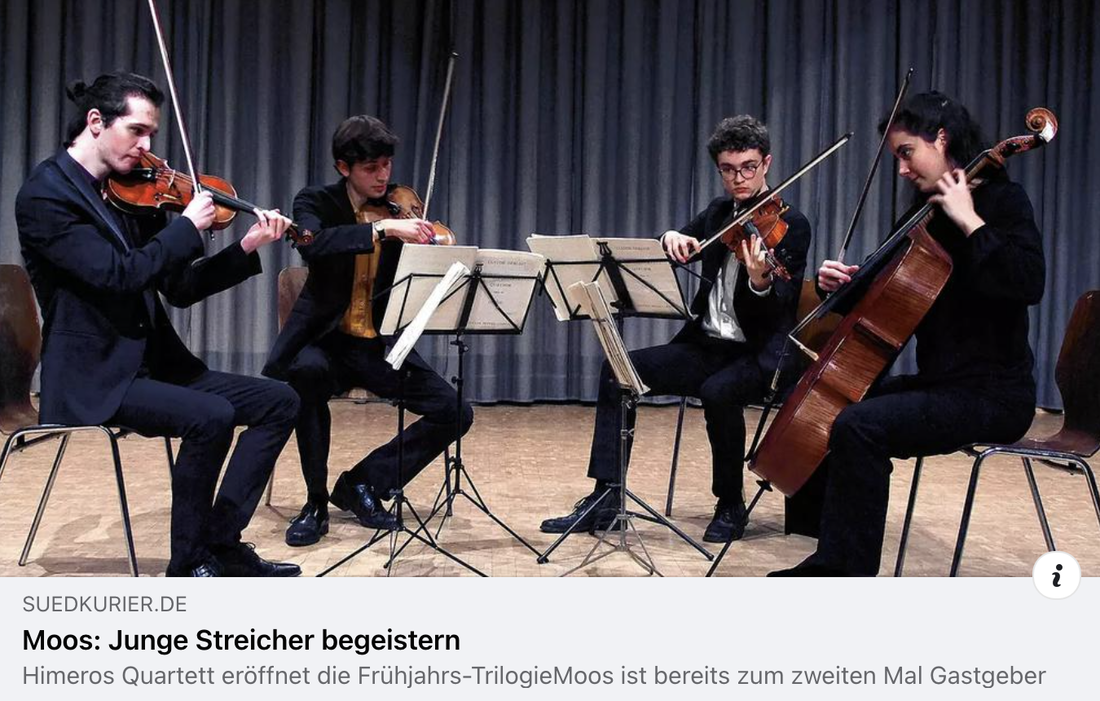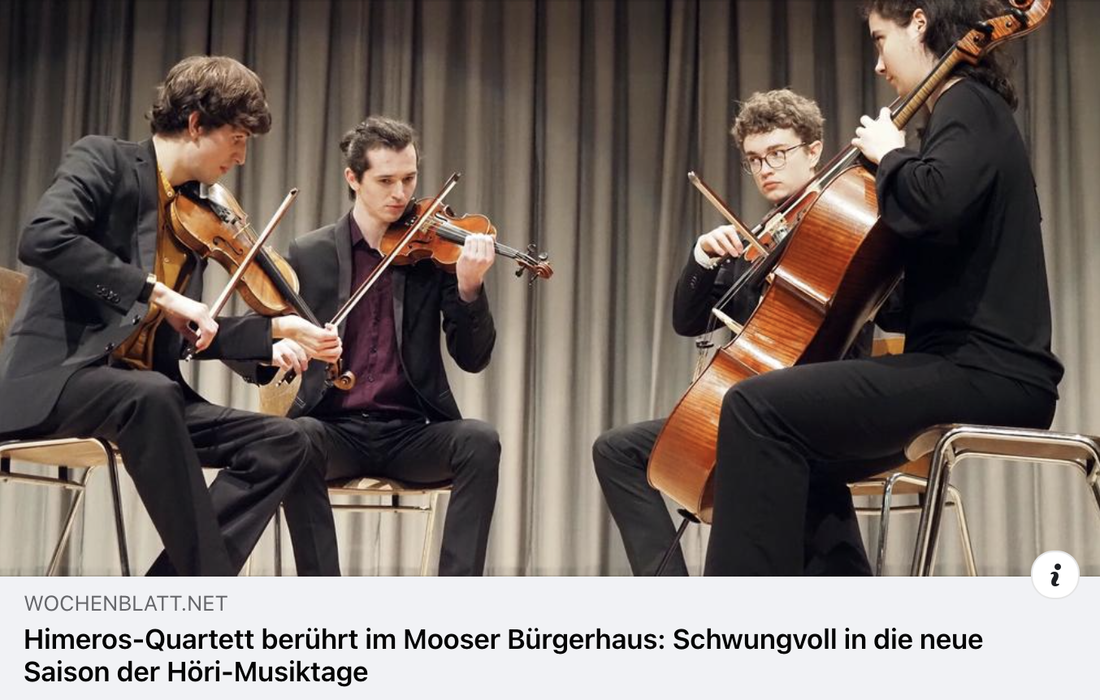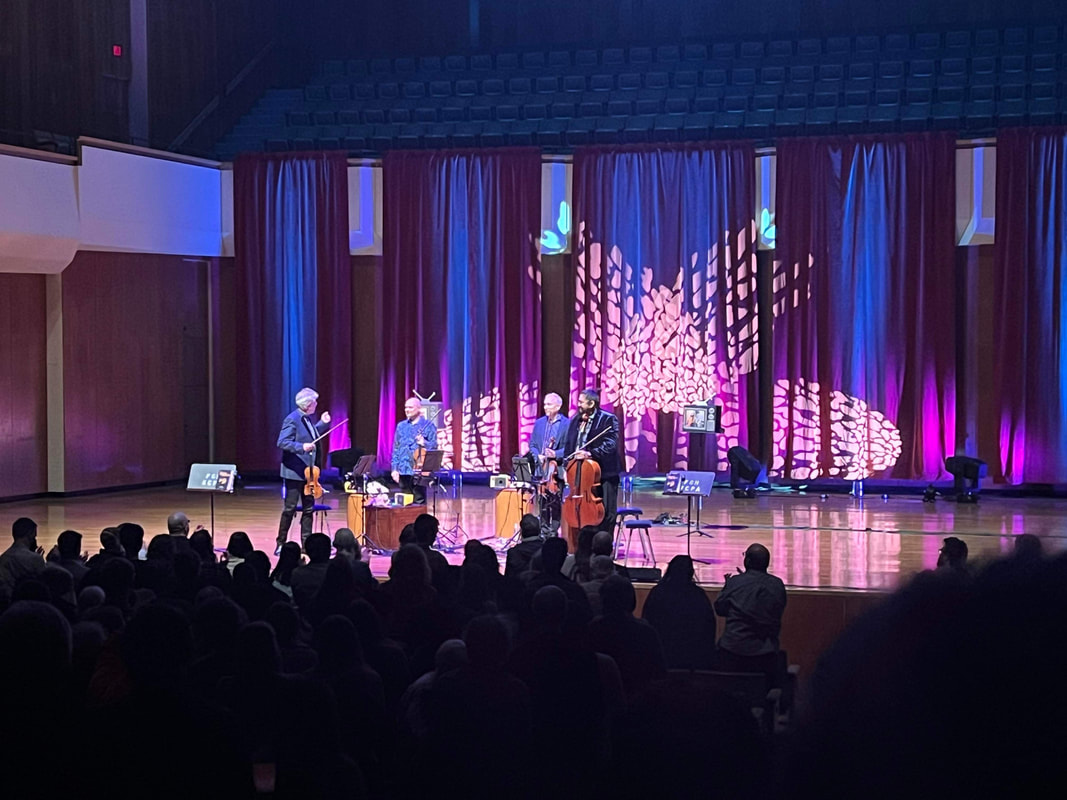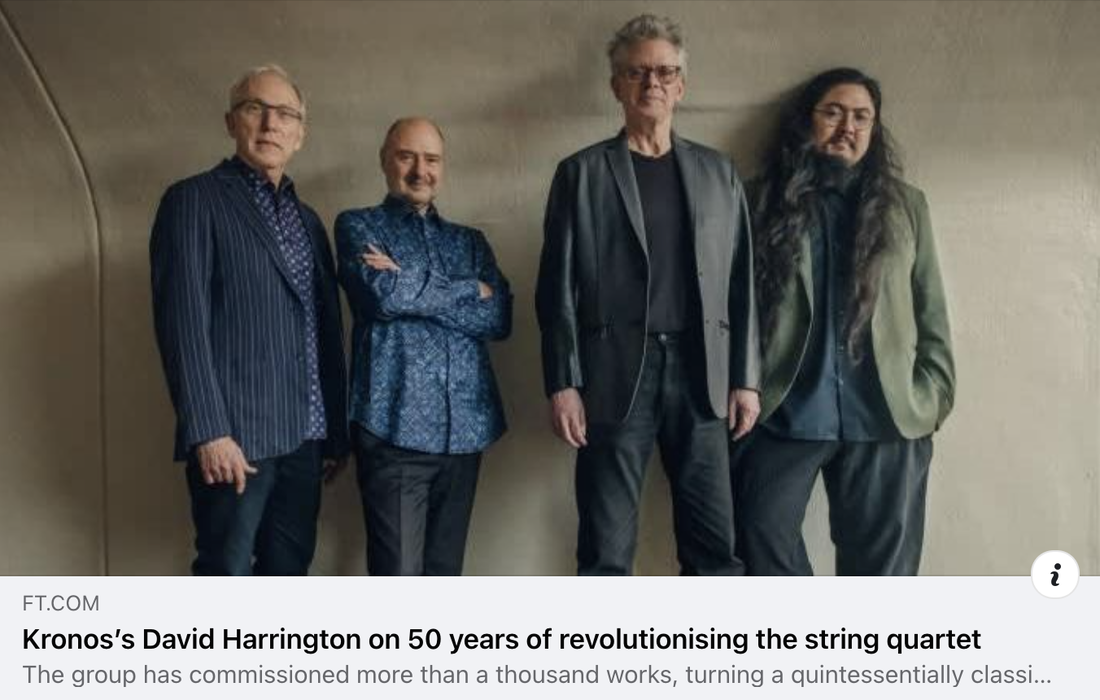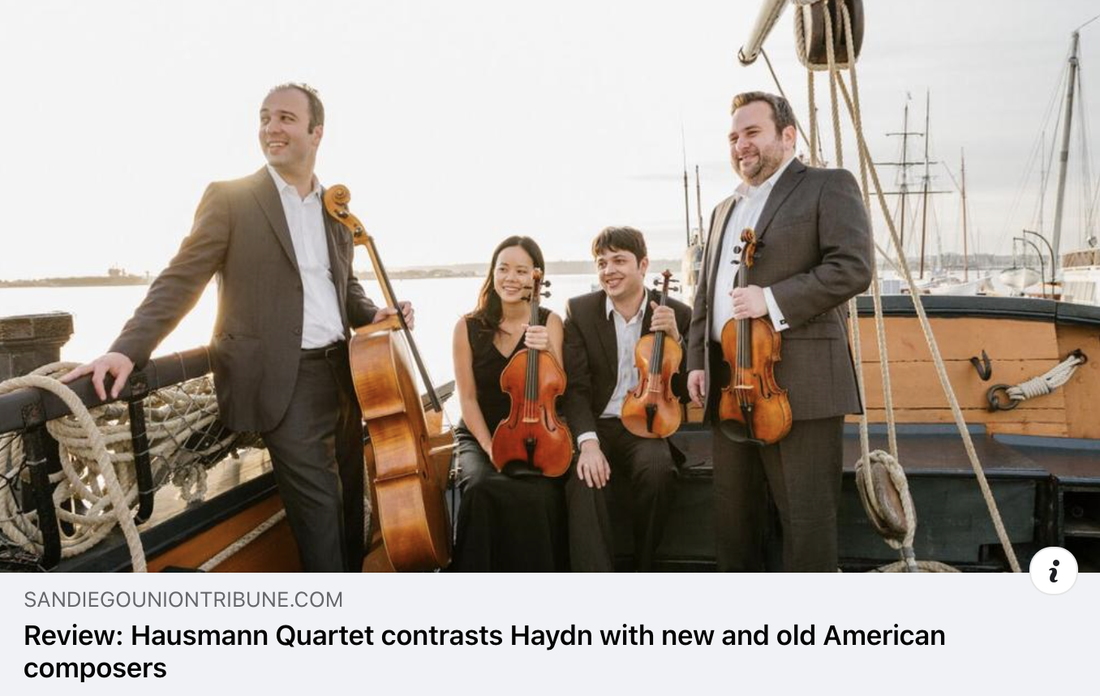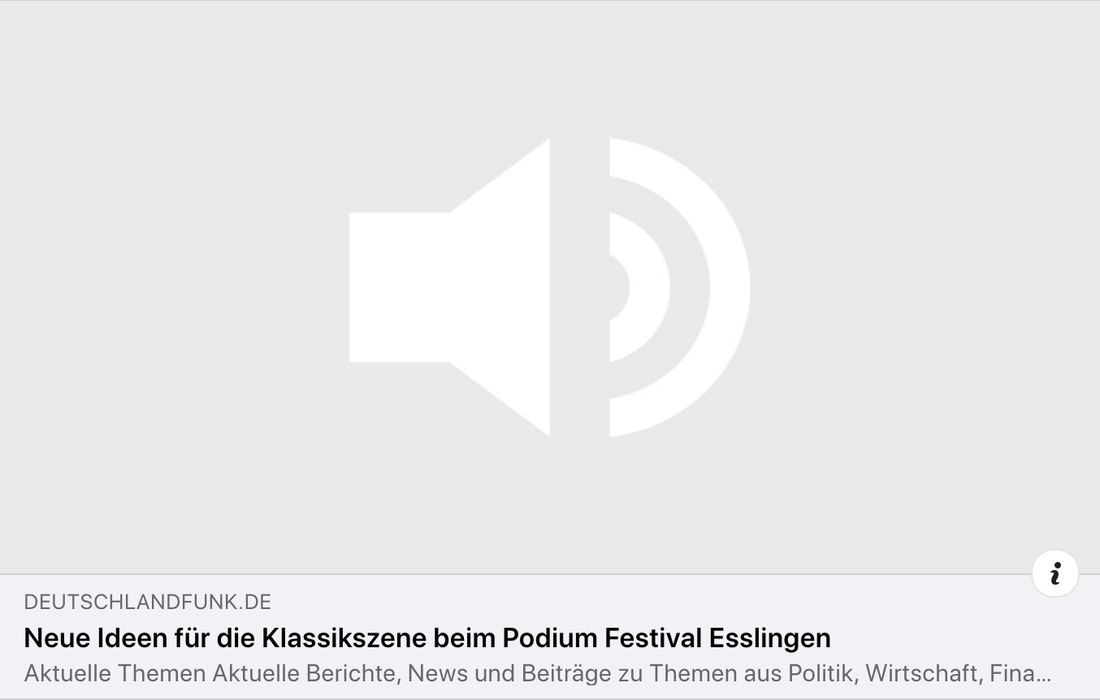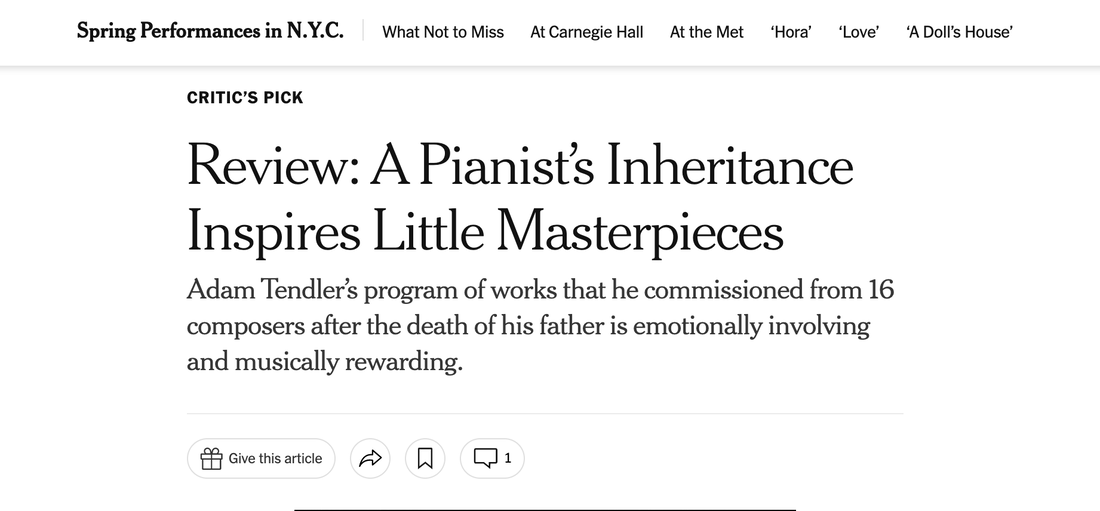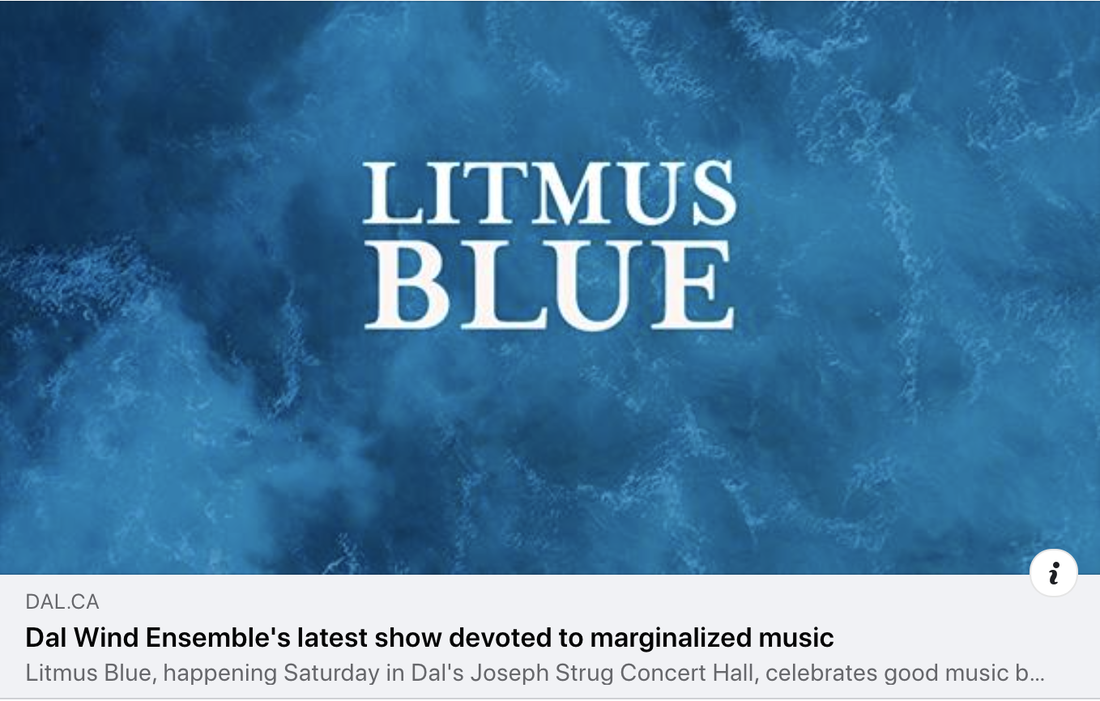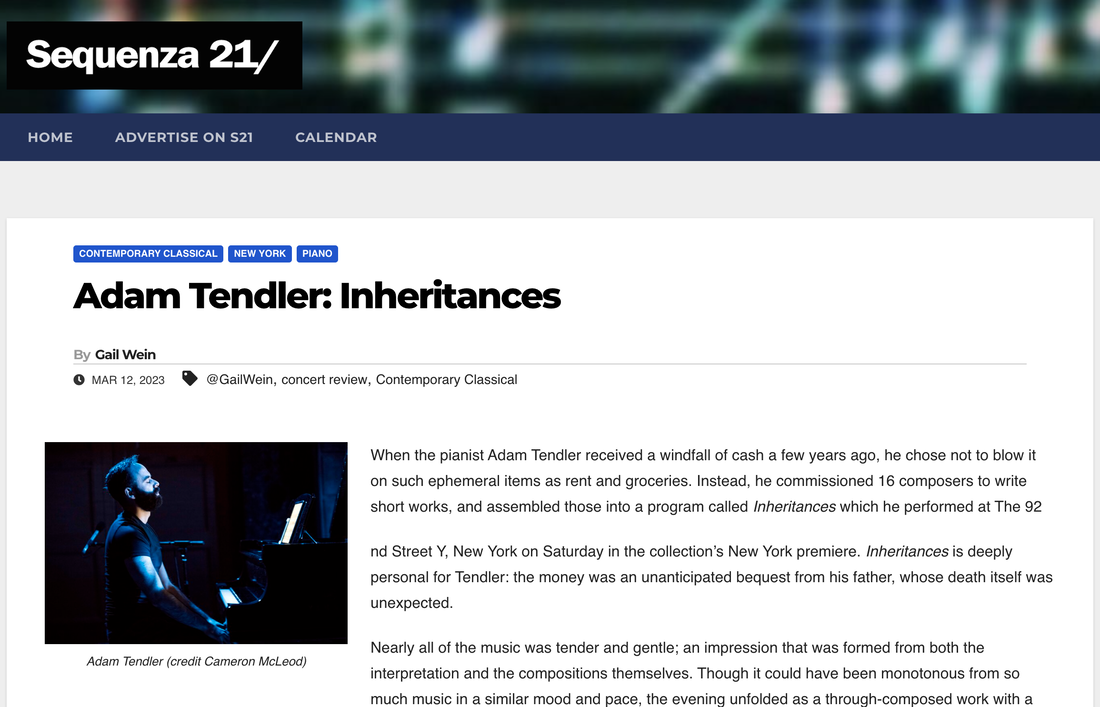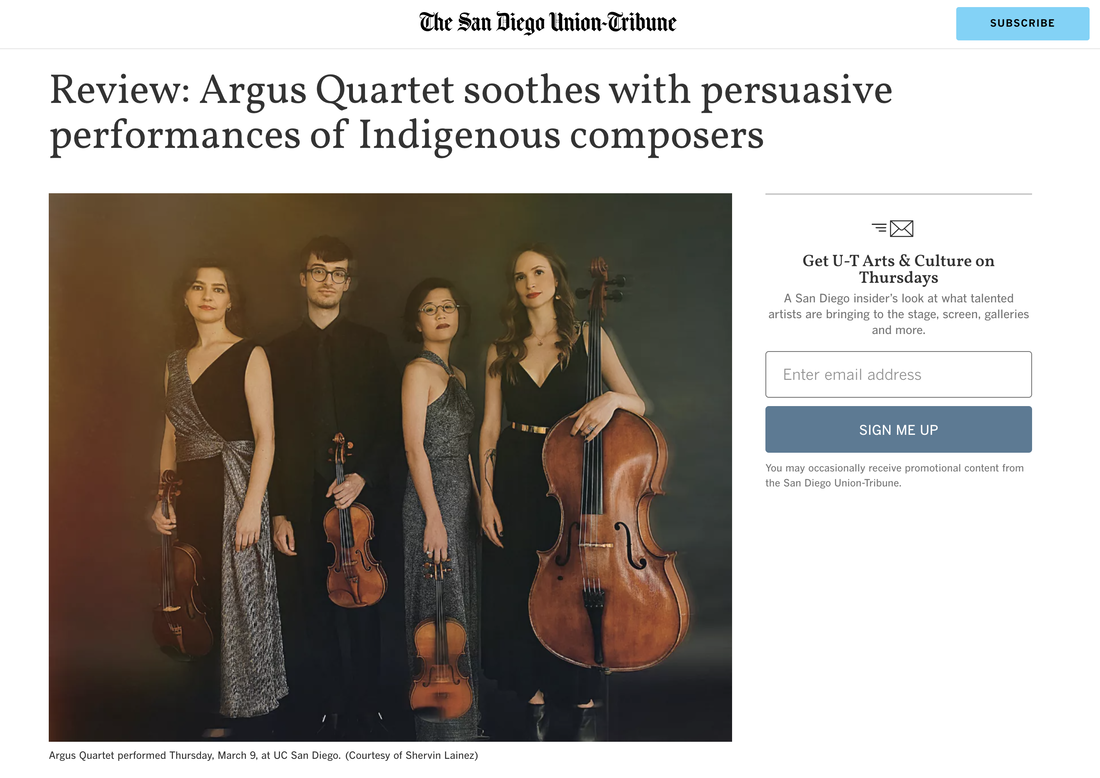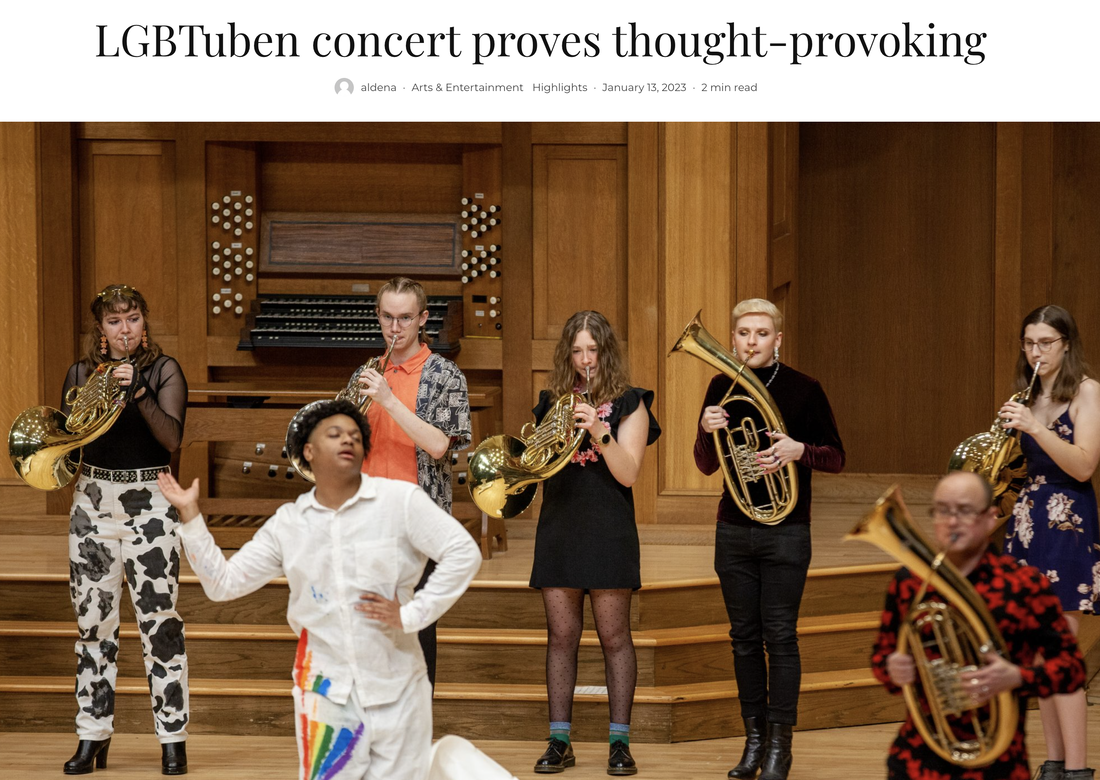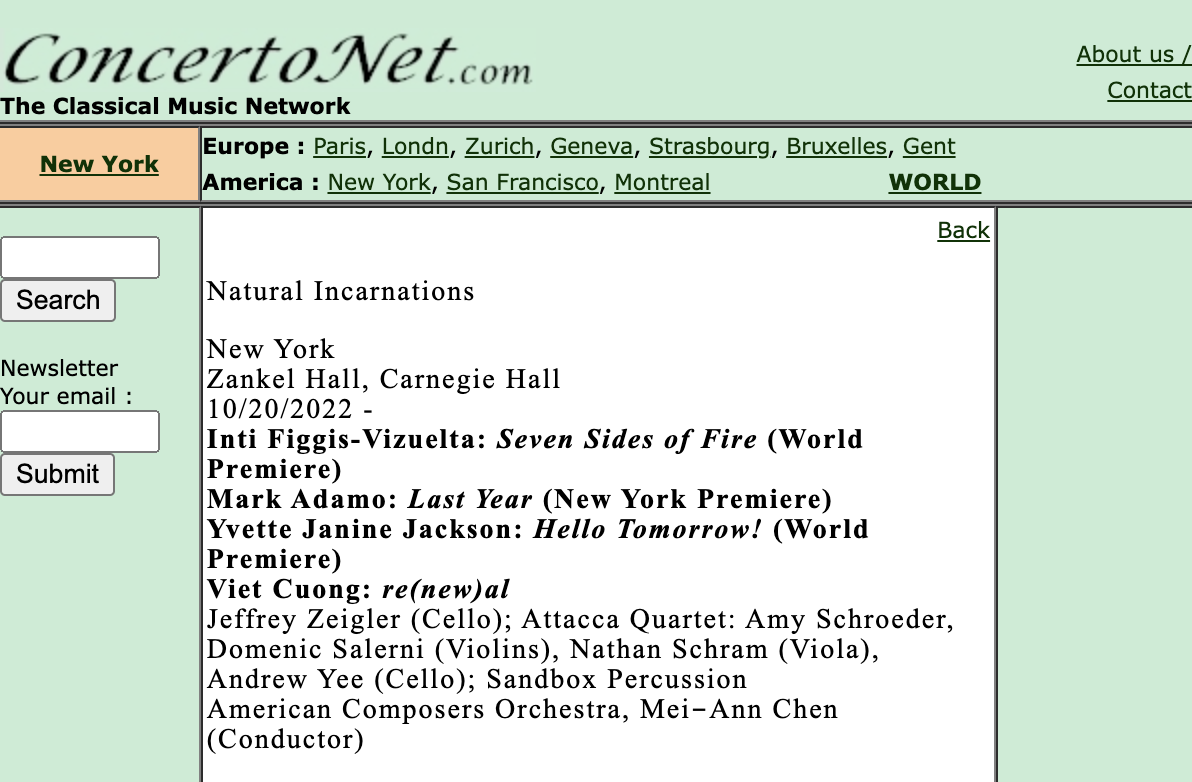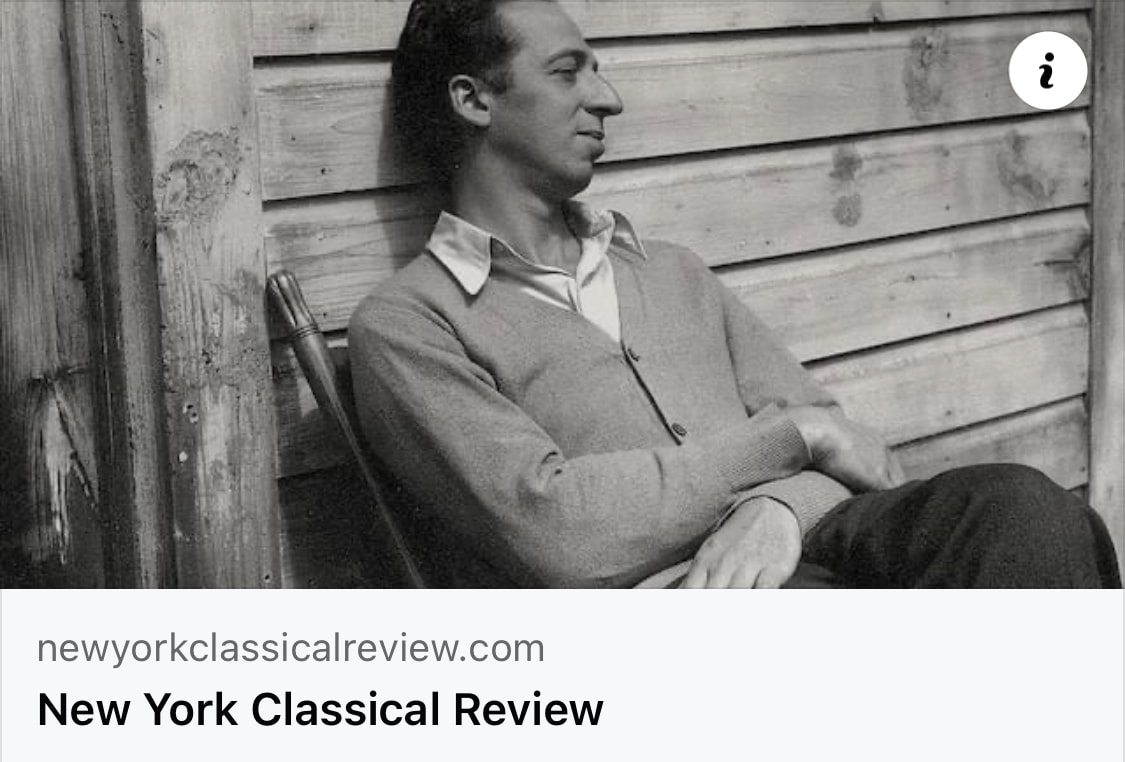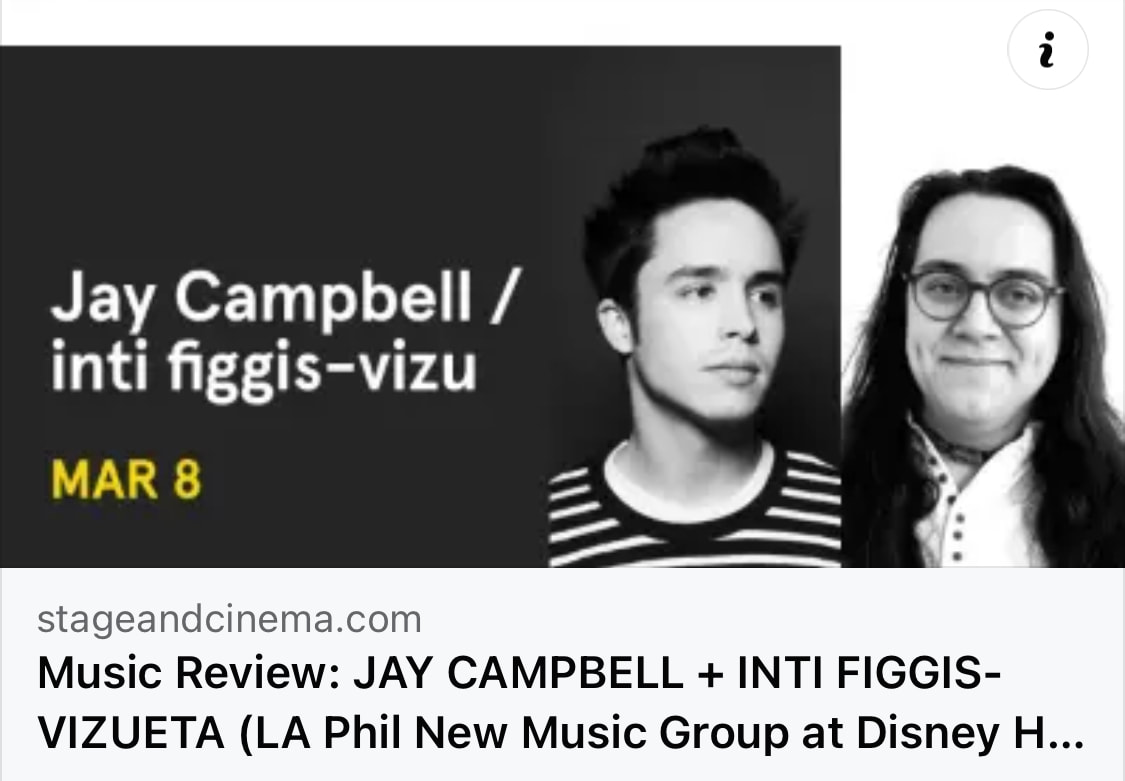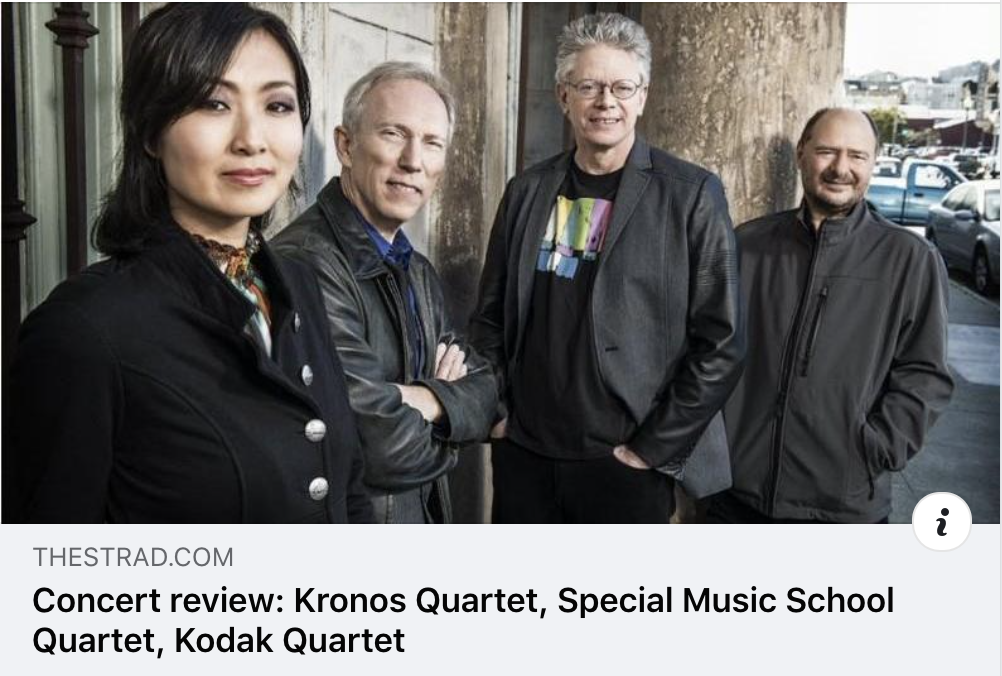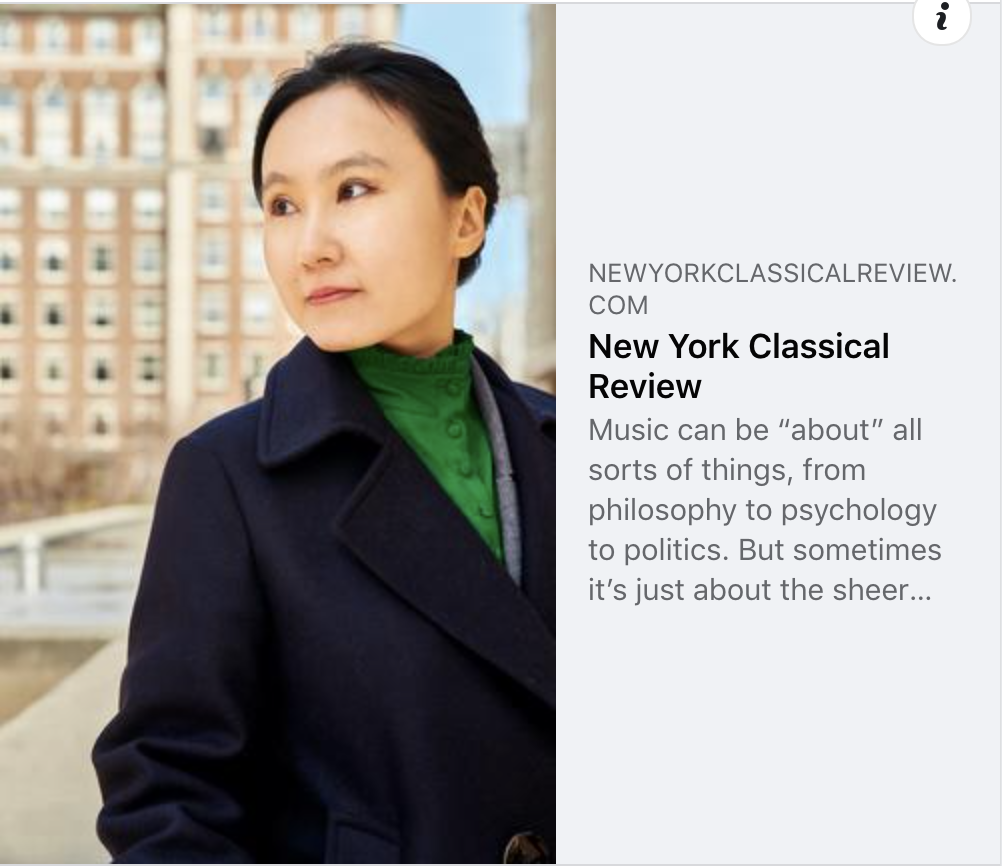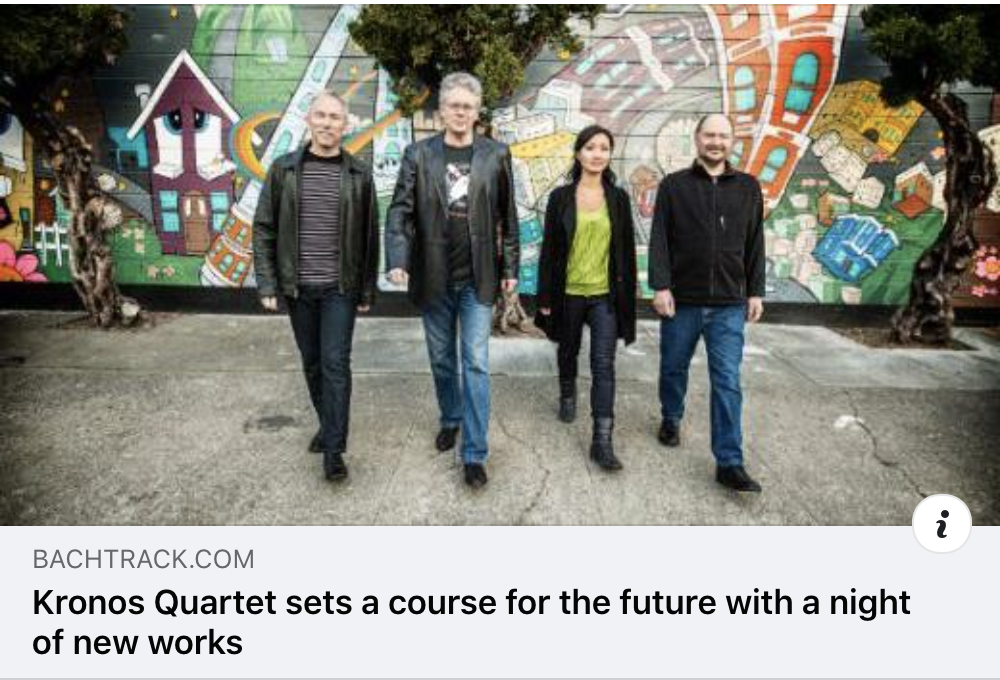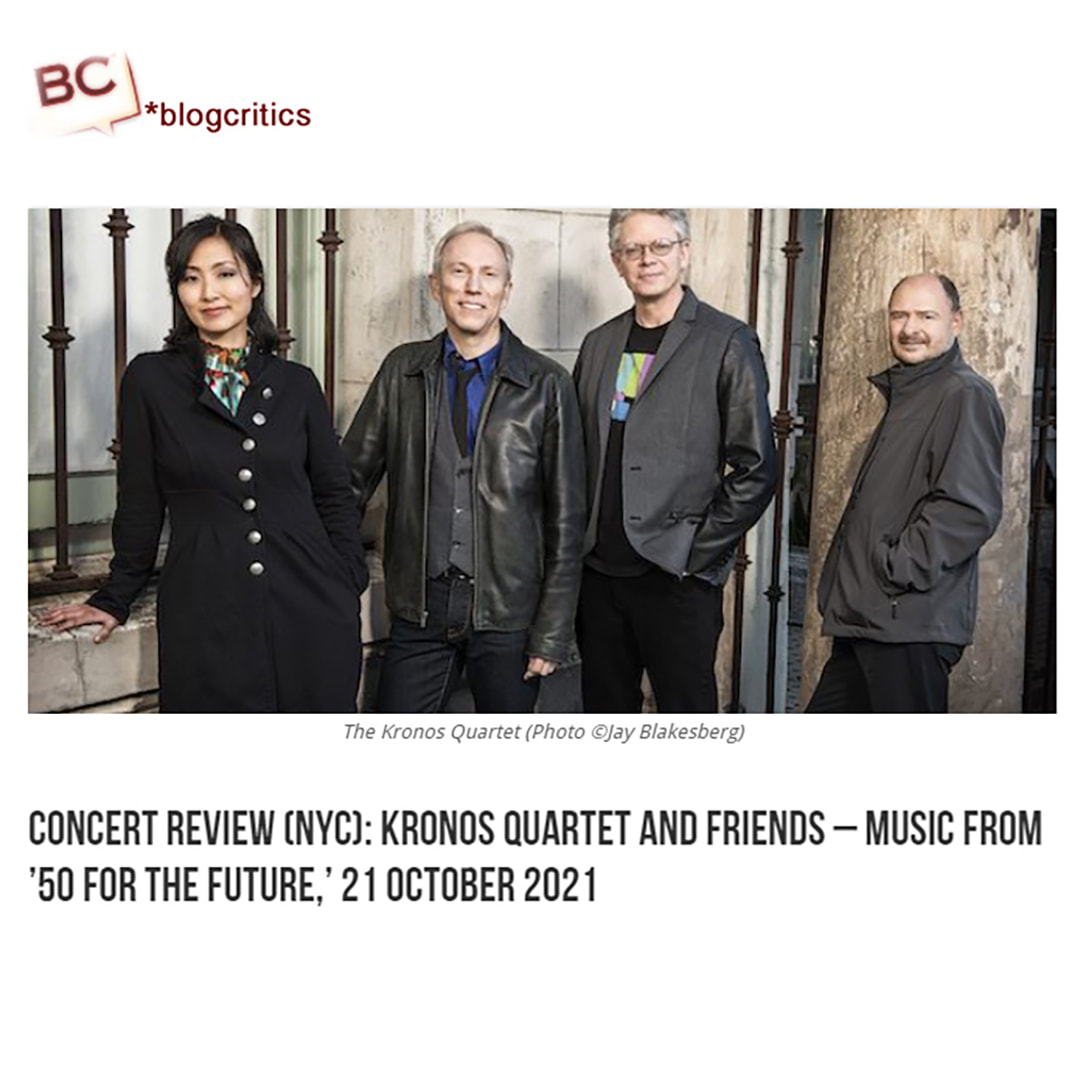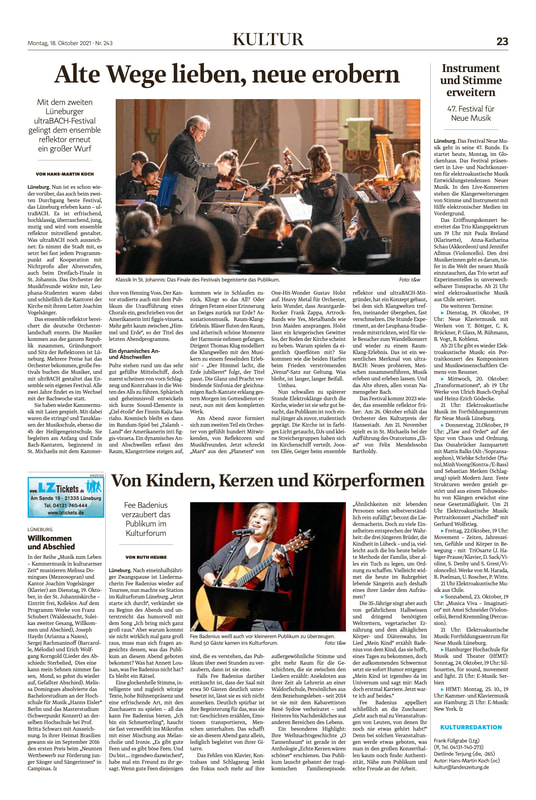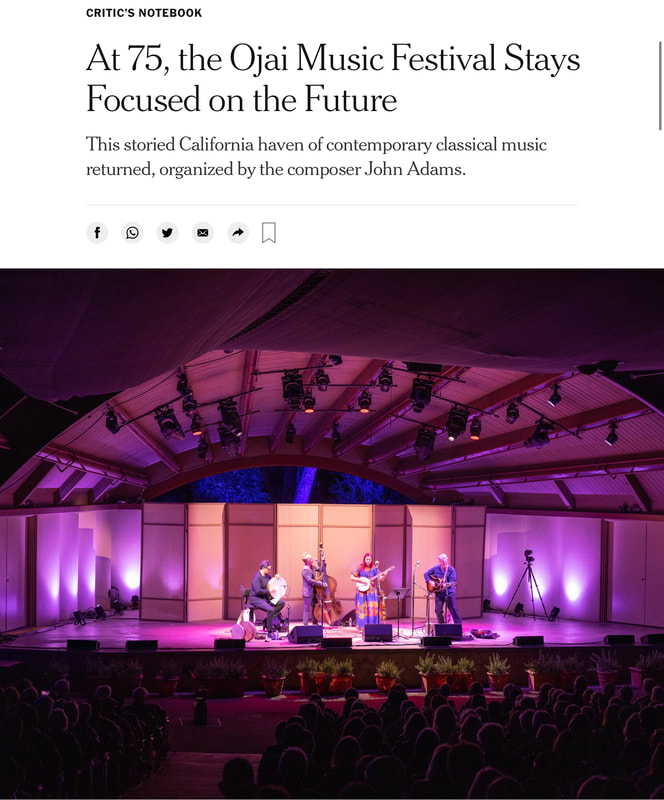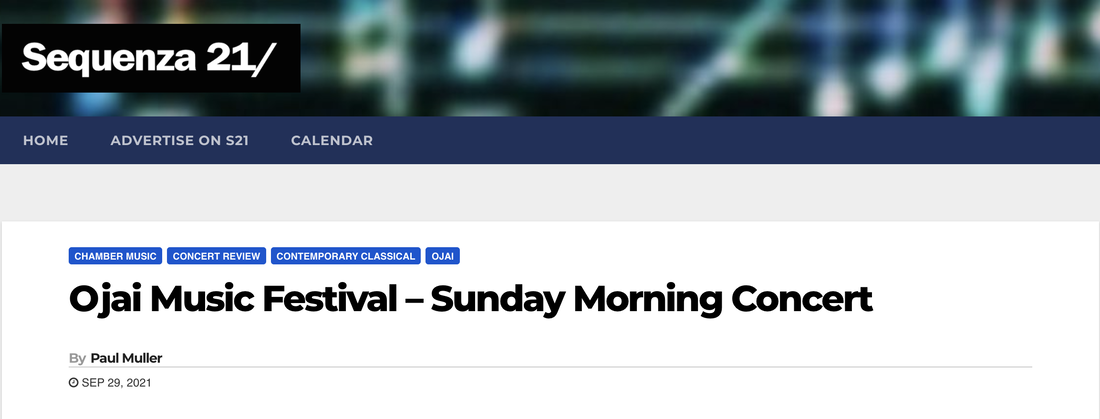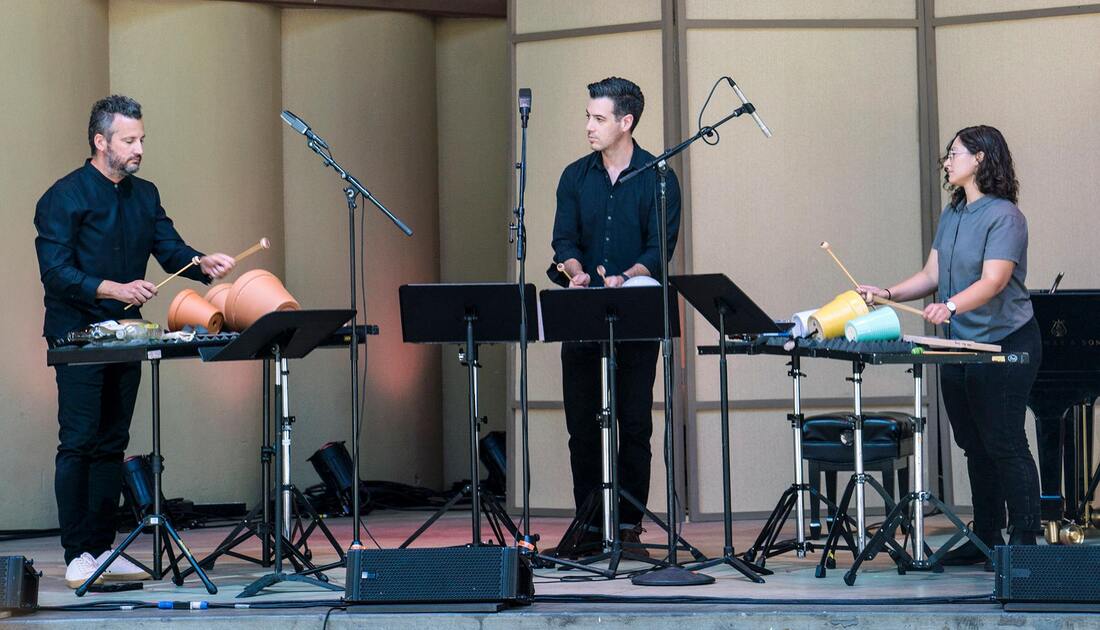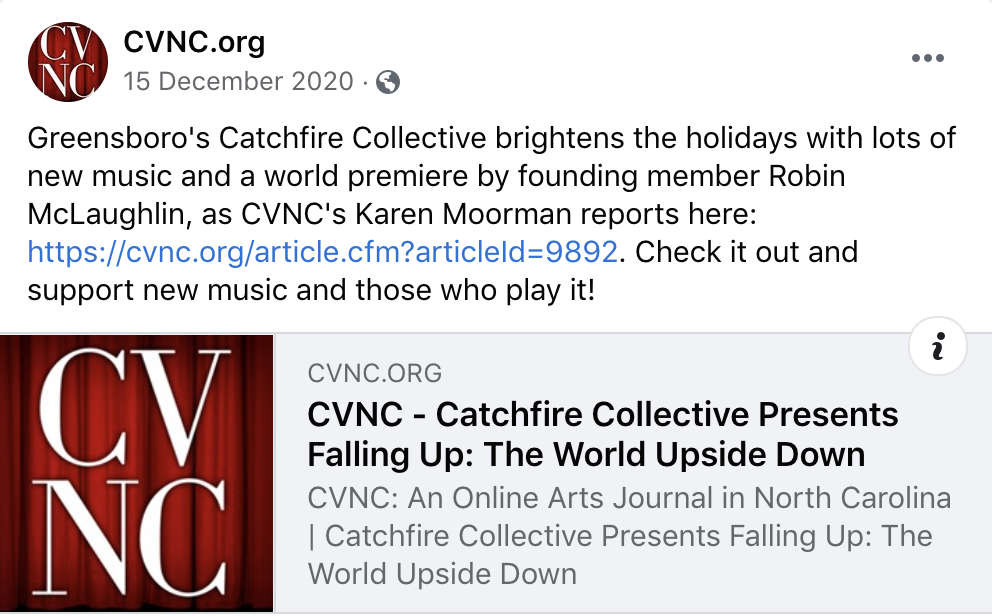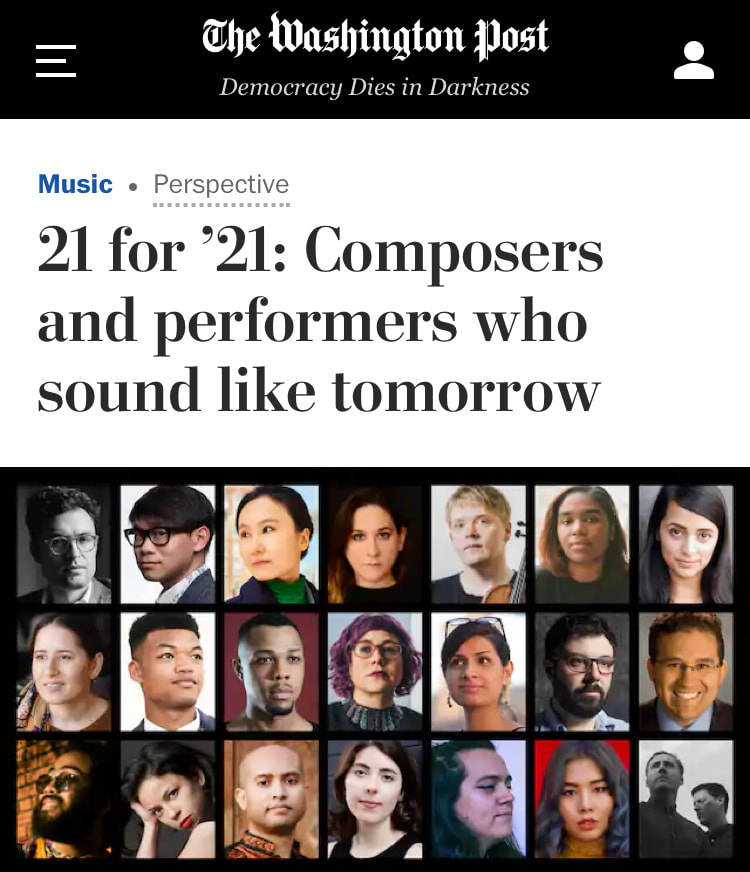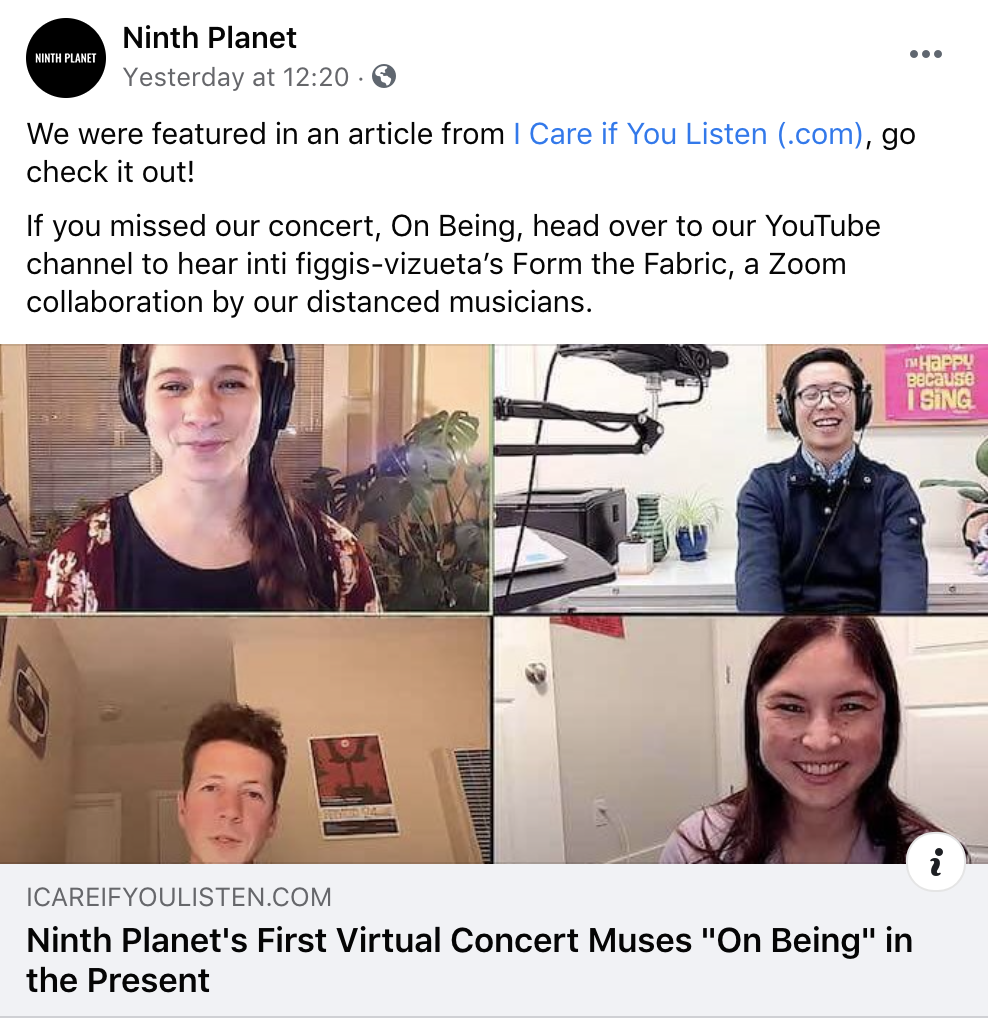[reviews & mentions]
...the world premiere of “mad scramble for crumbs,” Opera Saratoga presented a surrealist work of vocal art worth seeing, not only because it is tuneful, pleasant and expertly performed, but because it is the exact sort of bravery that rarely floats this far up the Hudson. |
Most of the stage time is devoted to the quartet of ancestors, played by focused and talented young artists from the company, who honor and engage Luna in organic and lengthy explorations of musical textures. A session is devoted to paper that’s scratched and torn, wadded up and thrown about. What seem to be snippets of the Quichua language become sonic devices that are also passed and shared. They make tones from the rims of water glasses, they ring all manner of bells, and engage in lots of improvisational choruses based mostly on the overtone series. |
One of the best-kept secrets in classical and jazz is this monthly free series at Santa Monica Public Library. The next program has the venturesome local Isaura String Quartet, who will play pieces by composers ranging from the late, neglected Gloria Coates, who was born in 1933, to ever-intriguing, rising new music star inti figgis-vizueta, who was born 60 years later. Also on the program will be recent works by two young cutting-edge, genre-busting L.A. composers, Laura Cetilia and Sarah Hennies. |
‘The festival will stage…the world premiere of an as-yet-untitled opera by inti figgis-vizueta, being created right now amid the festival’s six-week season. |
Composer inti figgis-vizueta’s to give you form and breath relates “manipulations of rhythm as manipulations of time” in its foregrounding of the connections between creation stories, oral tradition, Indigenous identity and knowledge. |
All the other compositions were by women or decidedly non-binary people. For example, "Love Reacts Only" by Inti Figgis-Vizueta, which gave this program its name: From bright excited colors, it expands increasingly downwards, where love seems to become quite concrete. |
Music for Transitions by inti figgis-vizueta started the concert, with violinist Giancarlo Latta and cellist Jules Biber sitting opposite each other, and soprano Danielle Buonaiuto and baritone Brian Mummert in the other two chairs, visually emphasizing how the voices and the instruments seemed to be having separate conversations at times before all merging back into textural focus. figgis-vizueta’s piece serves as a strong reminder that so much of our perception is contingent on what and how we choose to observe, and that if the proverbial or literal shoe doesn’t fit, then it’s not yours, so of course you shouldn’t wear it! |
inti figgis-vizueta is a composer whose work we’ve heard a few times in Portland before. Including the Pyxis Quartet themselves, who played Imago at the American Haiku concert about a year ago, on April 13. This year Olivera performed figgis-vizueta’s solo cello work the motion between three worlds. Reading off an aleatoric graphic score, Olivera wove together the disparate textures into a solid performance, based mostly around open string harmonics and arpeggios. |
This concert also featured...Talamh by inti figgis-vizueta, a work that moved smoothly through an array of colourful textures. |
...the second song, “Form the Fabric” by inti figgis-vizueta, had a clear buildup of playful, vivacious notes with separate parts from each section noticeably coming together to create something much like one does with fabric. The stage was constantly in motion, from the journey that each song took to the movement of musicians going on and off stage to the bodies of the players as they swayed with the beat, perfectly in tune with the sounds they were generating. |
figgis-vizueta’s concert showcased the range of her work, including a mesmerizing string sextet (secret music, originally for quartet) that explored a plethoric combination of timbres and pitch movement. With Lanzilotti on viola and figgis-vizueta leading on violin, the ensemble played a morphing stream of tremolos that phased in and out of synchronicity in satisfying and hair-raising ways. In you are the water, cello soloist Derek Stein shredded chords, scurried through chromatic lines, and slid up and down the harmonic series, his raucous and confident interpretation of the aleatoric score exemplifying the essentiality of the performer in figgis-vizueta’s work. Rountree may have had the most fun of all in ensemble forecast, channeling Mickey Mouse a la The Sorcerer’s Apprentice while he conducted the controlled chaos. |
By Saturday, the drizzle had evolved into a downpour as I fought Long Beach traffic to get to the Museum of Latin American Art (MOLAA) for CURRENT: [INTI]MATE, an evening of chamber music curated by inti figgis-vizueta, a composer whose recent music has Carnegie, Spoleto and REDCAT under the hands of the Attacca Quartet, American Composers Orchestra, and Andrew Yee. The program weaves together music from composers of the Latine diaspora, including arrangements of Violeta Parra’s Anticuecas, culminating in a new work from the curator herself. These were the highlights of the program; a clear love of melody is evident in the folkloric Anticuecas, and an equally strong affinity for texture and timbre are present in figgis-vizueta, Negrón and Balter’s selections. The arrangements were clever, and the program’s structure (loosely alternating older and newer pieces) worked well. |
As the sky turned a vibrant shade of pink and the sun set, the evening concert began. The program featured a series of sequentially performed, sonically overwhelming compositions by inti figgis-vizueta: you are the water, Open Space, Form the Fabric, ensemble forecast, Talamh, and secret music. |
Composer inti figgis-vizueta (who spells her name lowercase) is already, at age 30, a high-profile figure in new music. Her work has been heard quite a bit in the Bay Area and Los Angeles, with commissions from the Kronos Quartet, Ensemble for These Times, Santa Barbara’s Music Academy, and the Los Angeles Philharmonic and cellist Jay Campbell. |
The work by composer Inti Figgis-Vizueta "secret music" was initially open-ended as an improvisation. "Let's see where it takes us," Robert Lokhov announced the work for strings. Each musician was allowed to choose one or more strings and explore them throughout the piece. Exploring here means, as Robert Lokhov explained to the SÜDKURIER, "shaping the string and the sounds of this string in the quartet". The piece was played in sixteenth notes. The string was played with the tip of the bow to make the sounds appear soft with little pressure. The quartet recorded the work in January as a commission for the Mendelssohn Competition. "We had to work it out and learned to love it," said Lokhov: "In this piece, you listen to the other and react to them. You don't play for yourself, but for the quartet. The audience responded to the improvisation with roaring applause. |
The piece "secret music" by Inti Figgis-Vizueta was very contemporary and onomatopoeic, which, thanks to the youth of the players and their willingness to experiment, was able to elicit many a fascinating sound from the instruments and yet also had a gripping arc of suspense. This was achieved without any melody and also gave this concert evening its title. |
Inti Figgis-Vizueta’s “Clay Songs,” (a world premiere), was inspired by Andean whistling pots found at archeological sites, and the Kronos members waved replicas of these whistling jars, to eerie effect. I did not understand how these sounds were produced, but later, I watched a three-minute demonstration on YouTube by a Peruvian man on how these pots produced bird calls and other sounds. |
Asked whether he has influenced that change in Kronos, Wiancko replies: “I think the group was headed in that direction anyway and maybe I sped things along a bit. But for a lot of the young composers writing for Kronos now, it’s standard practice to throw a little improvised section into the score.” This is true of Figgis-Vizueta, whose scores with Peruvian whistling jars Wiancko describes “very much as road maps”. |
“[inti’s] string quartet scores require unusual participation from the musicians. The six minutes of “branching patterns” is notated on one page for the entire ensemble. Pitches are provided, with instructions for possible interpretations. At times, solo moments are designated for players. Textures and gestures, such as upward glissandos or pizzicato arpeggios are similarly indicated. |
'In “Music for Transitions,” composer-curator inti figgis-vizueta sought to create an “unbroken dialogue” between her friends and collaborators by merging their music into a continuous 70-minute program. Rather than emphasizing what makes each composer unique, the program drew throughlines between their works, revealing shared obsessions, convergent discoveries, and similar methods of execution. In a society that valorizes individualism and encourages competition, this purposeful blending of creative voices felt like a revolutionary choice. |
'Among them was inti figgis-vizueta’s [“coradh (bending),”] with host and conductor John Kennedy enlisting the audience to lend their voices to match the tones heard on stage in the form of vowel sounds. Together, we created a bridge of sound and vibration between artist and listener.' |
'For inti figgis-vizueta, a black hole in space is filled primarily with flashing string sounds that condense into a cosmic fog. Waiting in terror for the end as an inevitable catastrophe is no solution either, finds the Irish-American composer and transwoman figgis-vizueta. |
It would have been enough for Tendler to perform these discrete compositional languages persuasively and call it a night. But there was also a sense of true dramatic stakes. The piece “hushing,” by inti figgis-vizueta, played out over archival video of Tendler as a child; the intense chordal pounding of the piece had the feel of eerie, silent-film piano accompaniment. |
“There’s going to be a trombone mouthpiece in your saxophone,” explained Jacob Caines “That’s our solution.” |
An intense peak at the center of the program was inti figgis-vizueta’s hushing, which was coordinated with home video clips from Tendler’s childhood. It was stark, energetic and physical, with Tendler rising to his feet several times to fiercely pound the keys, alternating with poignant moments in which the Tendler on stage gazed up at the child Adam on the screen. |
The other Indigenous composer on the concert was inti figgis-vizueta, who is of Andean heritage. The scores to “mayu: the great river” and “Talamh (land)” appear sparse on the page, providing harmonies, graphic notations, and verbal instructions to get from one structural point to the next. Oral transmission of knowledge during rehearsals is an important component of these works. |
As the music subtly transitioned into “From the Fabric” by inti figgis-vizueta, the student horn players exited and a figure gradually emerged from beneath the paper. It was Ahmad Allen, a Lawrence alum who brought his immense talents in song, dance and acting to the night’s forefront. First though, he was a craftsman, molding the paper into a cape, blanket and then mountain along to the music. Sometimes it seemed a battle between performer and prop—all to the tune of Wagner tubas. |
Inti Figgis‑Vizueta’s Seven Sides of Fire was 16 minutes of incendiary music. The Attacca Quartet and the American Composers Orchestra started tenuously, but suddenly burst open with a power‑driver series of chords. It could have been erupted from Heldenleben or Zarathustra, but this was Ms. Figgis‑Vizueta’s picture of fire in all its incarnations. The Attacca Quartet rarely used vibrato, lending an eerie sound, ranging from pointillistic “embers” to the incandescence of the four string players giving obviously aleatory sizzling measures. Ms. Chen–even stickless in this so difficult score–cued in with immaculate precision. |
The final set opened with Imago by Inti Figgis-Vizueta performed by the Pyxis Quartet. It was a noisy and touching piece consisting of a repeated harmonic cycle with variations in articulation and complexity. My notes say, “very cool,” which it definitely was. It’s also cool to hear a trans composer–there are many out there and they don’t get enough attention. |
Even with the hardest rating on the program (five eighth notes that meant “the most esoteric, avant-garde classical music”), ensemble forecast went down easy. This was predominately a graphic score, calling for the musicians to improvise under the conductor’s guidance. This meant some non-standard techniques, like bowing the back of a violin, but the shape and intention of the music was clear—on the technical side, that mean moving towards ensemble bowing, and on the musical side, the feeling of particles of sound coming together into a mighty rush of wind. While the very premise of “difficult music” is suspect, one [imagines] that a more experienced group of improvisors would deliver a more avant-garde experience with this score. Still, this was a solid performance. |
Another piece, “hushing,” by inti figgis-vizueta, made great use of reverberation, and also had a wonderfully strange moment, where Tendler wrapped a cord around the piano strings and pulled them back and forth, creating an eerie sound. |
Next up was the world premiere of composer inti figgis-vizueta's "music by yourself," which brought forth a cauldron of subtle sounds. |
The cynosure of the evening, performed last in the program, were figgis-vizueta’s two sonorous, atmospherically complex, short pieces: Amaru, a world premiere (featuring Campbell on cello), and a new string orchestra arrangement of her 2020 Talamh (Land). Each of these works was inspired by a discrete constituent of the composer’s family heritage. While Talamh — a more straightforwardly appealing minimalist tone poem with a dissonant edge — evokes the Irish landscape that figgis-vizueta associates with her father, Amaru — alternately poignant and chaotic, jarring and sweet — takes its name from the two-headed serpent in Andean mythology. Both pieces, though Amaru especially, repeatedly lulled their audience into an apparent familiarity of the nature of the composition before shifting the terms of engagement and demanding a renewed perspective. |
Two brief pieces from Koh’s Alone Together commissioning series followed, and paired quite well with the Bach. inti figgis-vizueta’s quiet city and Missy Mazzoli’s Hail, Horrors, Hail were played with barely a pause, both suggesting interruptions of solace and finding a resolution that felt only temporary. |
It is ever fascinating how different the compositional voices are here, and how juxtaposition illuminates. Listening to Inti Figgis-Vizueta’s beautiful quiet city (& easter bells from the bowery) against Ellen Reid’s invocation of claustrophobia, Brick Red Mood, brings out the best of both pieces, while the beauty of the lines of Rajna Swaminathan’s kindling seem highlighted after the Reid—freed from the constraints of those walls, perhaps. |
Inti Figgis-Vizueta’s branching patterns (2021), another world premiere, included all manner of extended techniques; the Kronos found structure and simplicity within a cacophony of sound and complicated texture. |
This vivid electro-acoustic performance set the table for Primavera Crown, a colorful, acoustic 2020 piece for 14 players by inti figgis-vizueta. Conductor James Baker led a crisp, lively performance that danced with guitar and percussion effects in the strings and microtonal beats in the winds. Clashing rhythms and whistling string harmonics hinted at the composer’s Andean and Irish heritage, but her fertile imagination for instrumental combinations and advanced playing techniques transformed any local references into uncharted territory. |
On the complexity tip, Inti Figgis-Vizueta’s branching patterns (which, like Rini and Narayan’s pieces, was receiving its premiere) was a brain-tingling structure, impressively fracturing into shards of melody and rich harmonies. |
The world premiere of “branching patterns” by the capital-averse inti figgis-vizueta mingled more or less abstract simulations of the sounds of nature with what I imagined as the soundtrack of a dream. This music dispenses with rhythm in favor of clusters and broadsides of sound. At times the drip paintings of Jackson Pollock came to mind. But the ever-surprising harmonies sustained a curious kind of flow. I responded very viscerally. |
Sounds and rhythms of nature and human activity also inspired branching patterns by inti figgis-vizueta. This expressive, world-premiere performance shimmered with tremolo and rapid string-crossing, an urgent passage of bow-bouncing spiccato, and a sprinkle of pizzicato to close. |
The choir also rehearsed the premiere of a chorale with the audience, written by the American inti figgis-vizueta. More is hardly possible between "Himmel and Earth," the title of the last evening program. |
In very Ojai fashion, there were so many living composers programmed that Esa-Pekka Salonen didn’t even qualify as a headliner. If anything, he was a known quantity that unintentionally faded amid the novelty of other voices. Carlos Simon’s propulsive and galvanizing “Fate Now Conquers” nodded to Beethoven, but on his own brazen terms. And there continues to be nothing but promise in the emerging Inti Figgis-Vizueta, whose “To give you form and breath,” for three percussionists, slyly warped time in a juxtaposition of resonant and dull sounds of found objects like wood and planters. |
|
photo by Tom Steenland
|
To give you form and breath, by inti figgis-vizueta, followed and this was an even more imaginative ensemble, consisting of a mobile percussion trio. Each player was stationed near a collection of everyday objects such as flowerpots, empty bottles, wood blocks, drums and stove pans. This began with a series of rapid rhythmic passages from each player that soon developed a nice groove. The amalgamation of sounds was engaging as each percussion station added to a wonderfully diverse mix of timbres and tones. To give you form and breath is based strictly on the changing complexity and dynamics of the rhythms and these were artfully varied so as to heighten listener interest. The playing by Joseph Pereira, Eduardo Meneses and Amy Ksandr was amazingly precise and resourceful. The rudimentary nature of the percussion elements provide a strong connection to the primal and inti figgis-vizueta writes that this piece “seeks to channel portions of that understanding through ‘ground’ objects and manipulations of rhythm as manipulations of time.” It is often observed that sometimes the most direct ideas are the best, and To give you form and breath certainly makes a compelling musical case. |
Haimovitz’s playing is thoughtful and committed throughout, the only technical challenge being the balletic section of Nkeiru Okoye’s Eubas Dance, with its perilous interlacing of double-stopping and pivot notes. The audio quality belies the fact the tracks were recorded at von Heyl’s artist studio in Texas. Jorge Sosa’s Reimagined Spring underlines the narrative eloquence of the cello; it is followed by inti figgis-vizueta’s the motion between three worlds, which, alongside its string-crossings and open chords, explores harmonics in a way that attractively opens up the transitional space between the material and immaterial. |
Highlights for me include inti figgis-vizueta’s the motion between three worlds, a rhythmic piece reflecting the composer’s Andean and Irish roots, Vijay Iyer’s reflective Equal night which includes an occasional nod to Bach’s iconic cello suites, the dramatic by Roberto Sierra and Lisa Bielawa’s otherworldly Missa Primavera... |
For figgis-vizueta, the creation of active creative space for living, breathing communities of composers might be even more important than repairing a long-broken history. |
No one can keep up with the pace of contemporary composers and their works, but inti figgis-vizueta is someone you don't want to miss. A New York-based composer, inti is an innovator in the style of John Cage. Open work has three sections – knotted object//Trellis in bloom//lightening ache. A generous artist, she allowed us an on-camera peak at the graphic score. While it may look simpler than standard notation, it takes a talented group of musicians to make sense of a non-traditional score and bring it to life. Catchfire's performance was magical. |
Originally from Washington and now based in New York City, figgis-vizueta, 27, knocked my comfiest socks off during the quarantine with “Music for Transitions,” a raw, scraping yet soaring solo piece commissioned and premiered by cellist Andrew Yee. Since then, I’ve been hooked: The Julius Eastman-inspired “Openwork, Knotted Object”; the haunting “No Words” for clarinet and electronics; the “reaching sap-slow toward sky” thriller of “Placemaking” — her music feels sprouted between structures, liberated from certainty and wrought from a language we’d do well to learn. Coming in 2021 are commissions for the JACK quartet and North Carolina-based ensemble earspace. |
Form the Fabric, an ensemble work by composer inti figgis-vizueta, can be played with any number of musicians on any type of instrument. The score provides lots of gestures, with some indications of harmony, leaving the interpretation up to the performing musicians. No two performances of Form the Fabric are alike, forming a new “fabric” with each performance. According to figgis-vizueta, the phrase “Form the Fabric” derives from archaeologist Ramiro Mato’s description of the cosmological understandings of the Incan & Andean peoples. Mato describes the Inca Road as “threads interwoven to form the fabric of the physical and spiritual world,” and figgis-vizueta conjures an auditory representation of the connectivity between the physical and non-physical. |
Alone Together is a marvel for a time of crisis. Ms. Koh gathered 20 established composers to donate short new works for solo violin and recommend 20 emerging composers to be commissioned as well. The roster is more inclusive than anything in mainstream classical music. |
inti figgis-vizueta presented the world premiere of three short pieces. Openwork, knotted object introduces quietly focused interlocking rhythmic patterns that weave in and out of each other as they breathe together. The enveloping world evokes a sense of translucence, which slowly rotates until all facets of the space are visible. Conducting the module-based piece, Lidiya Yankovskya allowed the instrumentalists to dictate when things moved forward, sometimes slowly rotating her hands but remaining largely in the background. |
Form [the] Fabric by New York-based composer inti figgis-vizueta is an exploration of collective improvisation where the musicians are provided with flexible lead-sheets. The composer herself conducted this performance which opened with beautiful sustained tones that swelled into a tumultuous ball of loud noise. The piece passed through several more textures, all quite different, but the impressive thing was the smoothness with which these transitions were conducted. |
Says 2019 [Hildegard Competition] winner inti figgis-vizueta, “When people acknowledge and engage with every part of complex identities, artists can create authentic work.” For figgis-vizueta, the competition win allowed them to “commit a large amount of time to the development and expansion of my practice of overlapping notional and structural schema. Beyond money, however, the most valuable part of this competition was mentorship from people [specifically, Gavin Rayna Russom and Du Yun] who shared more of my lived experiences than any other teachers I’d found in traditional spaces.” |
[older mentions, click for link]
In Review - Starshine & Clay by Brin Solomon
A Trans Composers Playlist by Alex Temple
In Review - Starshine & Clay by Brin Solomon
A Trans Composers Playlist by Alex Temple










